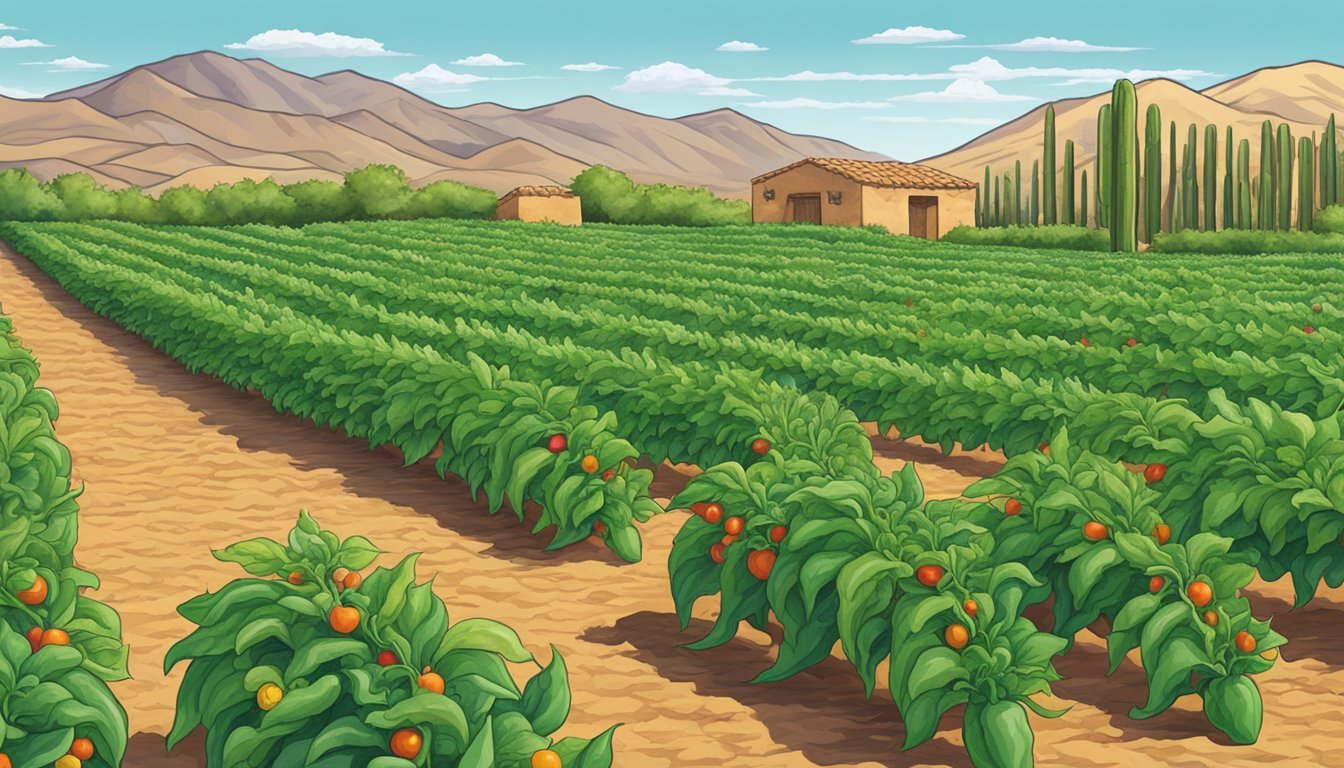Vegetable Gardening in New Mexico
A Practical Guide to Arid Climate Cultivation
This Article is Part of Our Guide on Vegetable Gardening by State
Vegetable gardening in New Mexico presents a rewarding opportunity for residents to grow their own produce despite the unique challenges posed by the local climate. New Mexico's arid environment, characterized by low humidity and precipitation, demands specific gardening strategies to cultivate a successful vegetable garden. Gardeners in New Mexico can benefit from selecting appropriate plant varieties that are well-suited to the regional conditions, implementing water-efficient irrigation techniques, and timing the planting season correctly to make the most of the growing season.
In New Mexico, understanding the local climate zones—encompassing areas from the high deserts to the mountainous regions—is crucial for garden planning. The state's wide range of elevations results in temperature variations that influence which vegetables thrive in each area. Cool-season crops such as beets, onions, and cabbage perform well in the moderate temperatures of spring, while warm-season vegetables like tomatoes, peppers, and squash require the hotter summer months. As such, planting calendars specific to New Mexico can guide gardeners on the best times to sow seeds outdoors, ensuring that vegetables are planted at the optimal time for growth.
Successful vegetable gardening in New Mexico also relies on soil preparation and maintenance. The state's soil often has low organic matter content and may require amendments to improve fertility and water retention. Composting and the use of organic mulches can enhance the soil's structure, providing a more conducive environment for vegetable roots. Moreover, pest management tailored to the local ecological conditions can protect gardens without relying excessively on chemical interventions. With these considerations in mind, New Mexicans can create productive vegetable gardens that lead to an abundant harvest.
Understanding New Mexico's Gardening Climate
Gardening in New Mexico requires adapting to diverse climate conditions and utilizing resources effectively to achieve a successful harvest.
Climate and Hardiness Zones
New Mexico features a variety of climatic zones, influenced by elevation and topography. The state spans USDA hardiness zones 4 through 9, with lower elevations typically experiencing warmer temperatures and higher ones being cooler. Knowing your local zone is critical for selecting the right plants and timing your gardening activities.
Managing Frost and Winter Conditions
Gardeners must prepare for New Mexico's frost dates, which fluctuate significantly with elevation. Anticipate the first frost by late October and the last frost as late as early May. Winter gardeners should focus on cold-hardy vegetables and use techniques such as mulching to protect against sudden temperature drops.
Dealing with Drought and Heat
Drought is a fact of life in much of New Mexico, making water conservation a top priority. Employ strategies such as drip irrigation and mulching to retain soil moisture. During peak heat conditions, plants may need additional water to thrive; however, be mindful of local water restrictions.
Strategies for Sun, Shade, and Wind
Abundant sun in New Mexico offers ample opportunities for vegetables that require full sun. However, intense sunlight and wind can harm delicate plants. Utilize natural or artificial shade to protect sensitive crops and establish windbreaks to mitigate wind damage, maintaining a balanced environment for your garden.
Selecting Suitable Vegetables for New Mexico
Not all vegetables are suited for New Mexico's climate. Research and plant vegetables that are known to perform well in your specific hardiness zone. Leafy greens like lettuce handle the cold well, but plants such as tomatoes will require the heat of summer. Use local growing guides to find vegetables that can flourish in your garden, taking full advantage of New Mexico's unique growing conditions.


